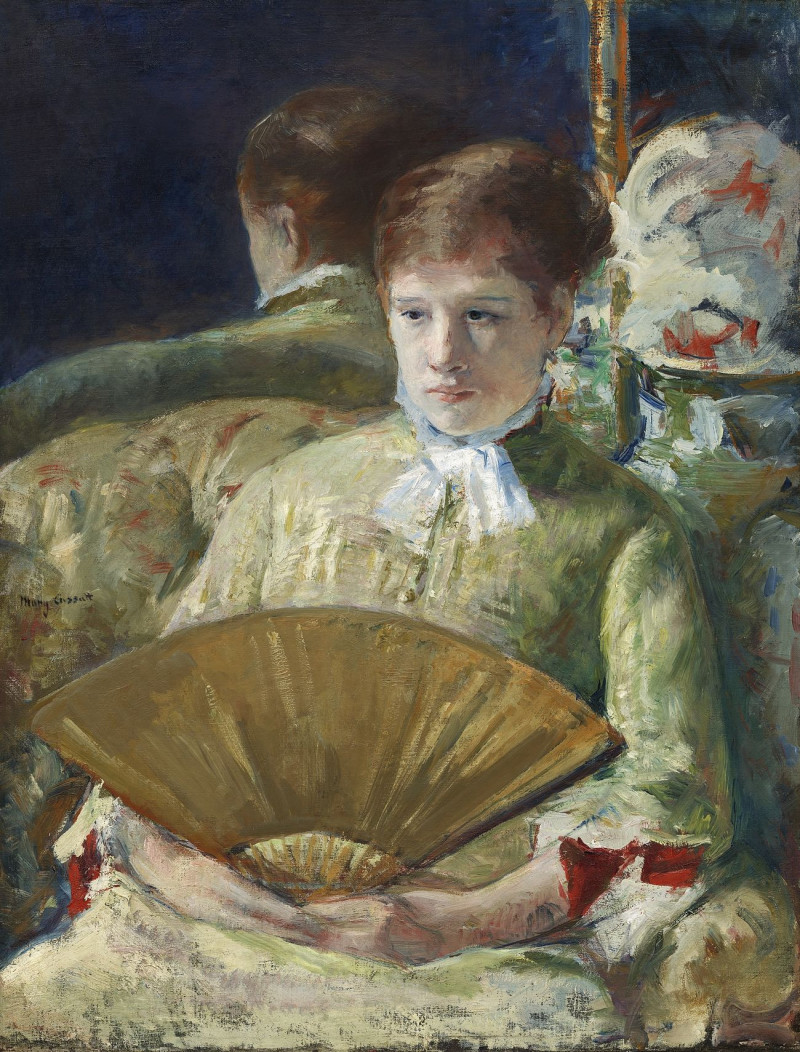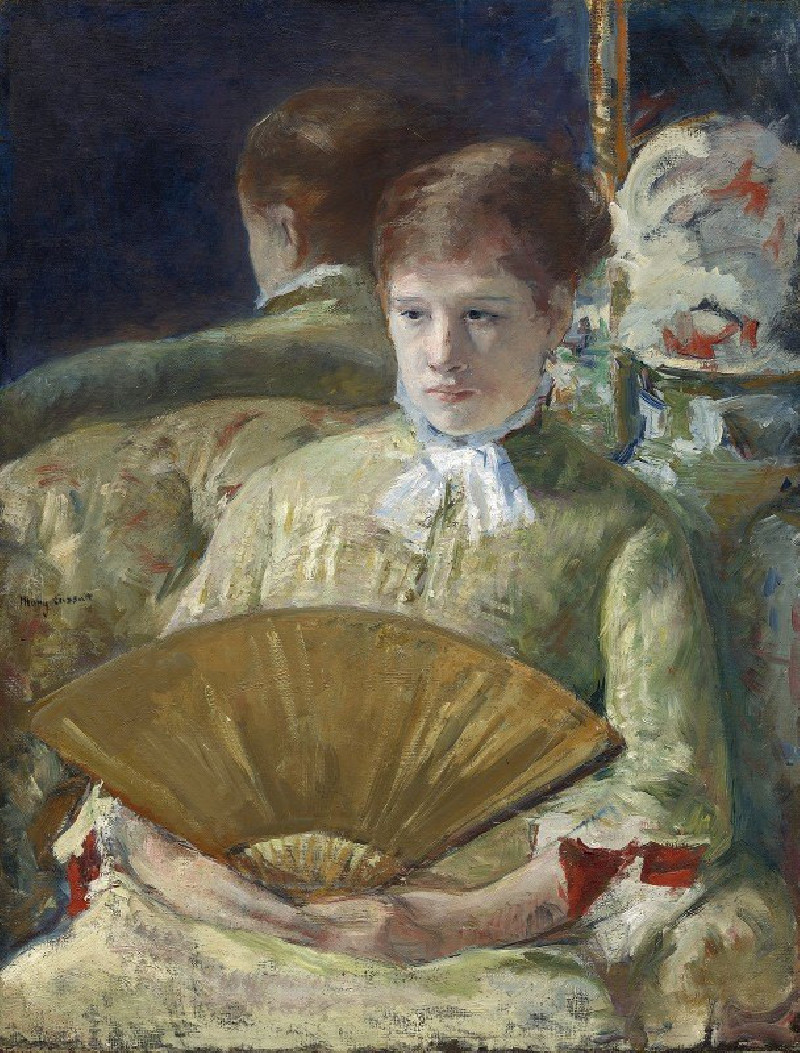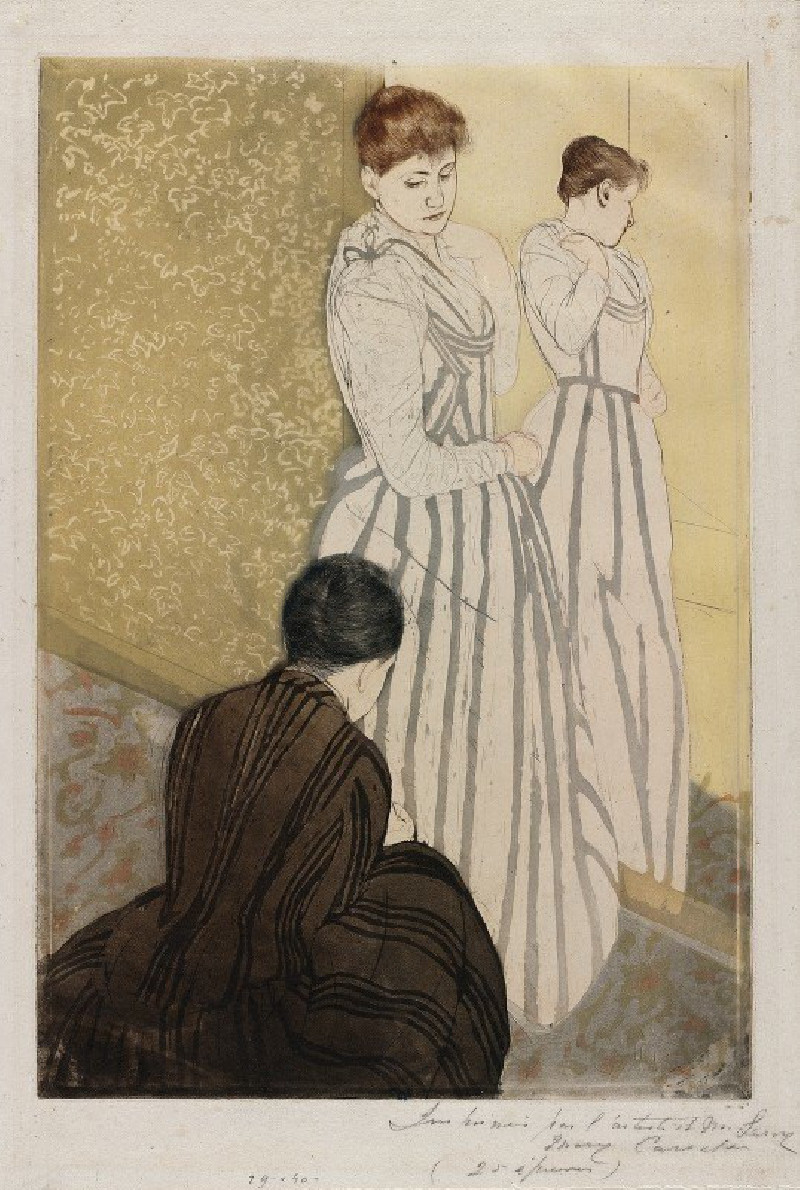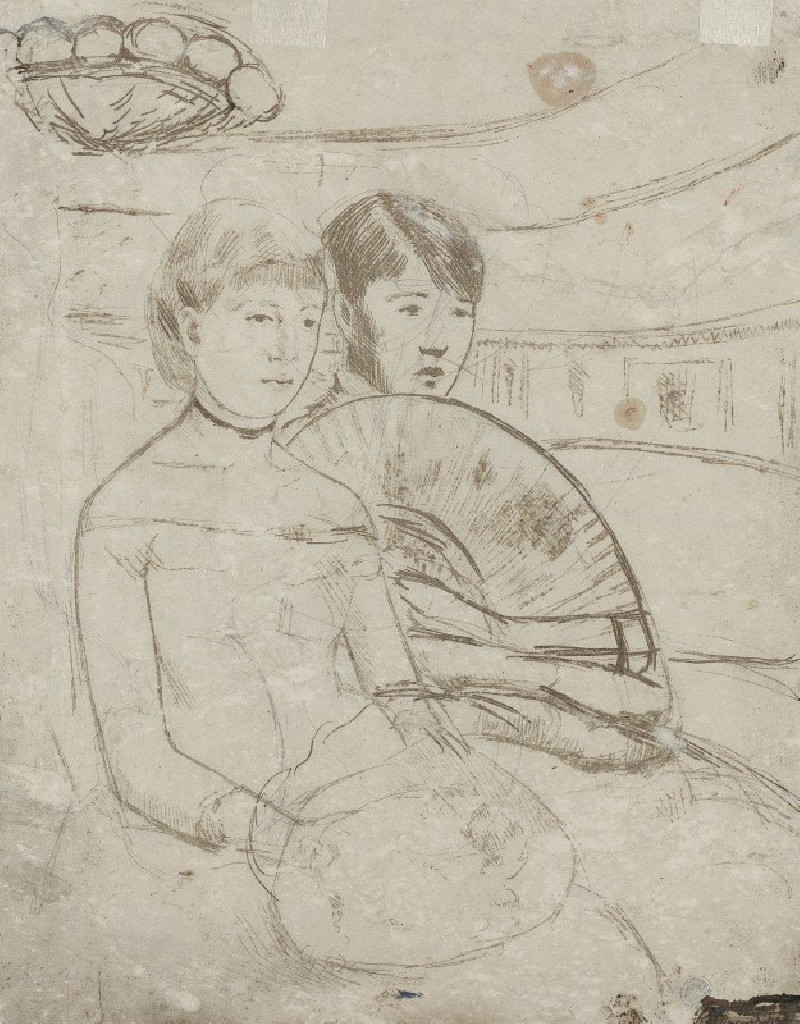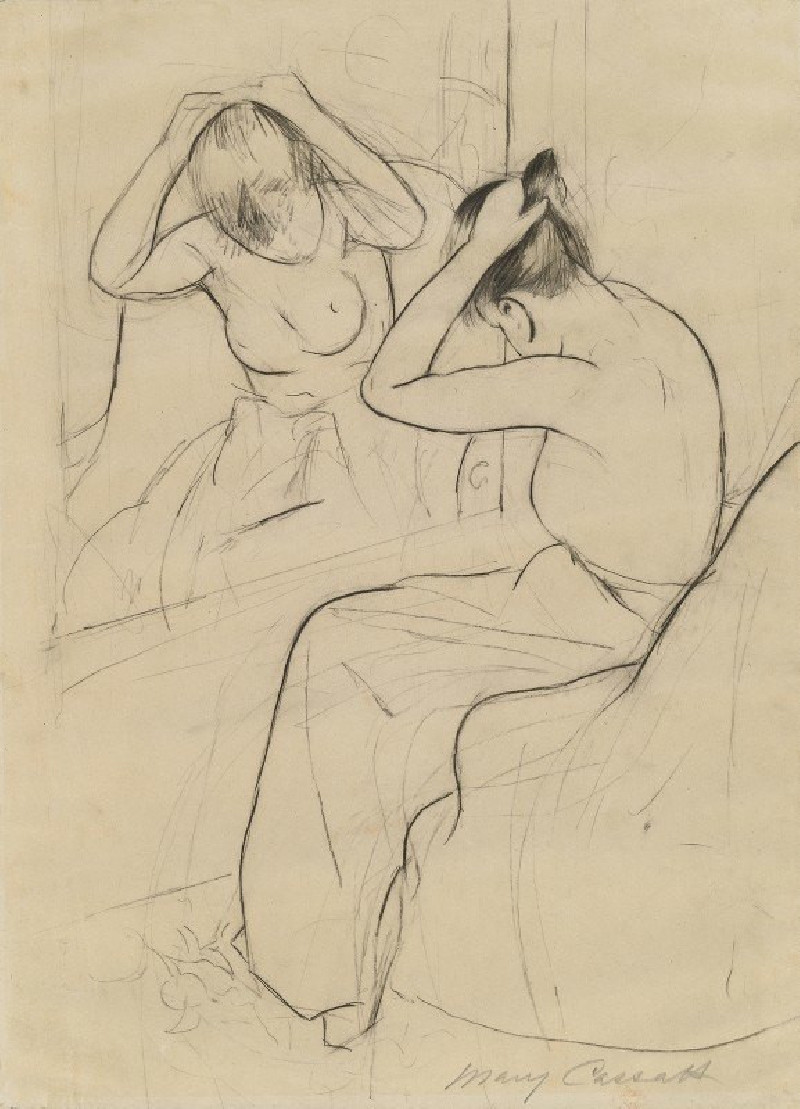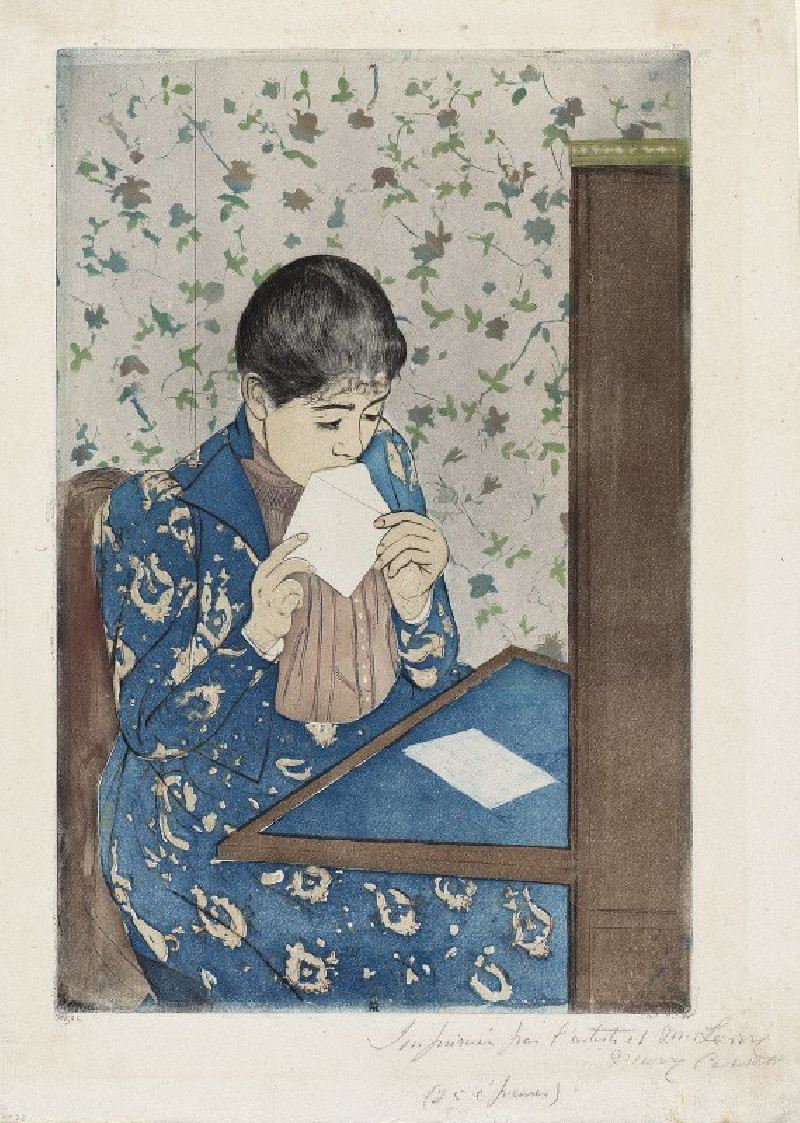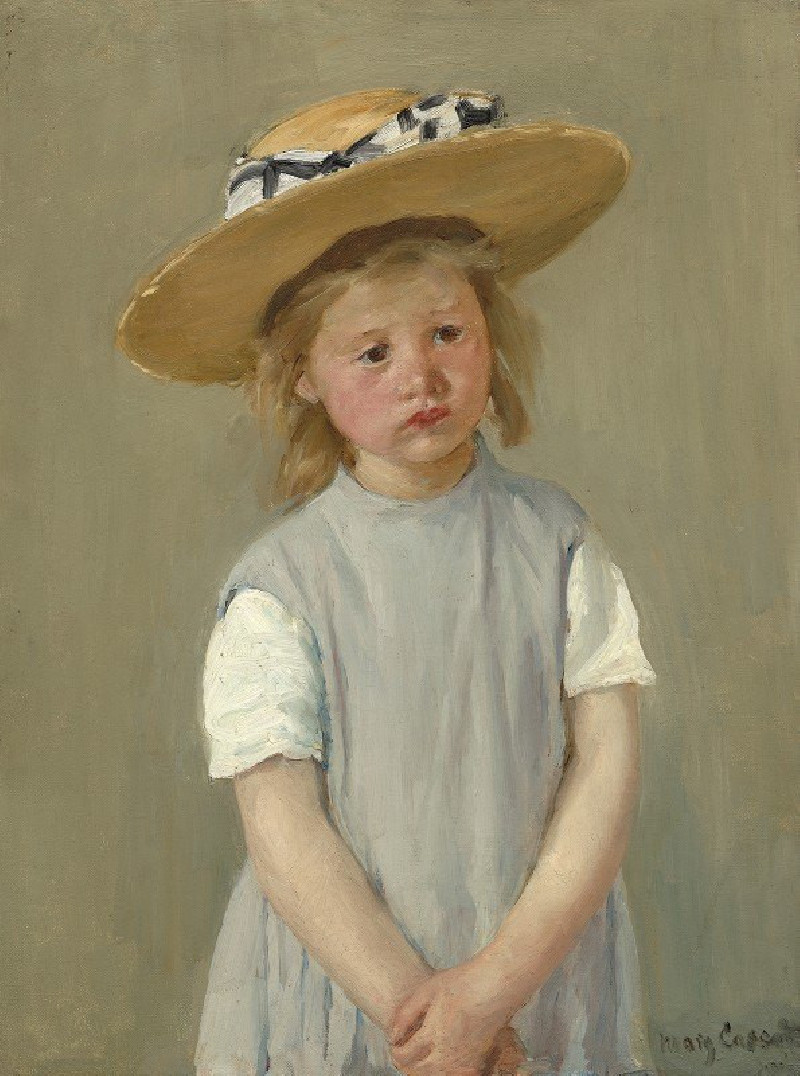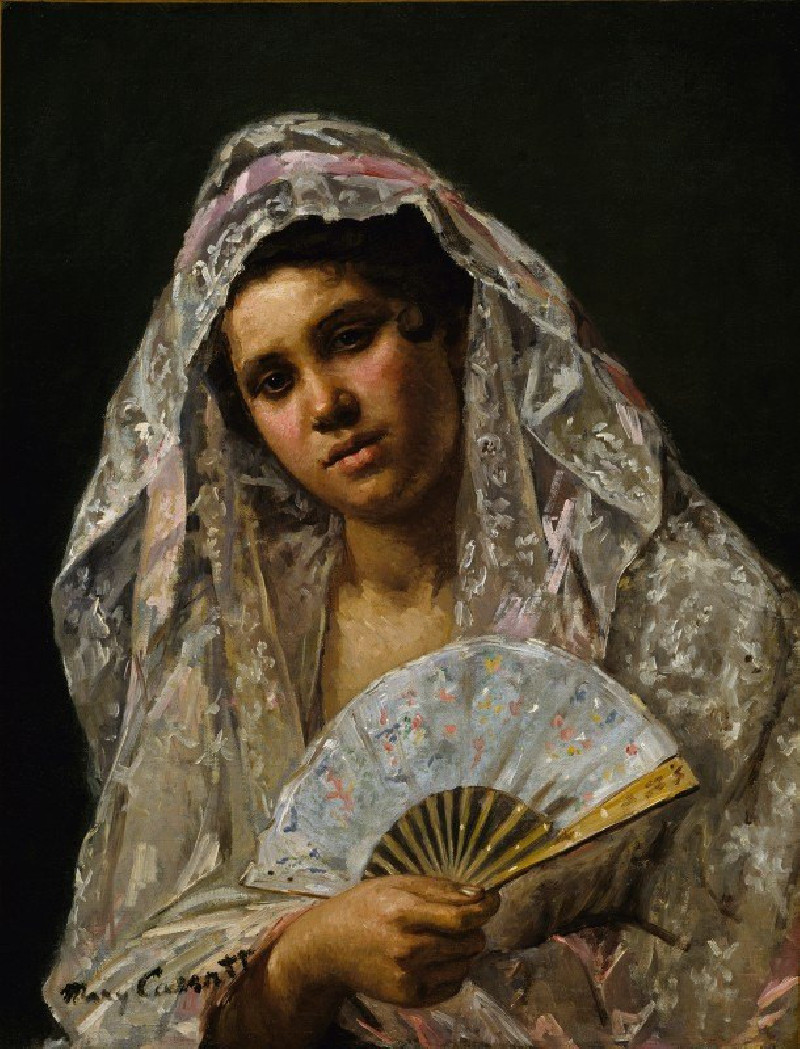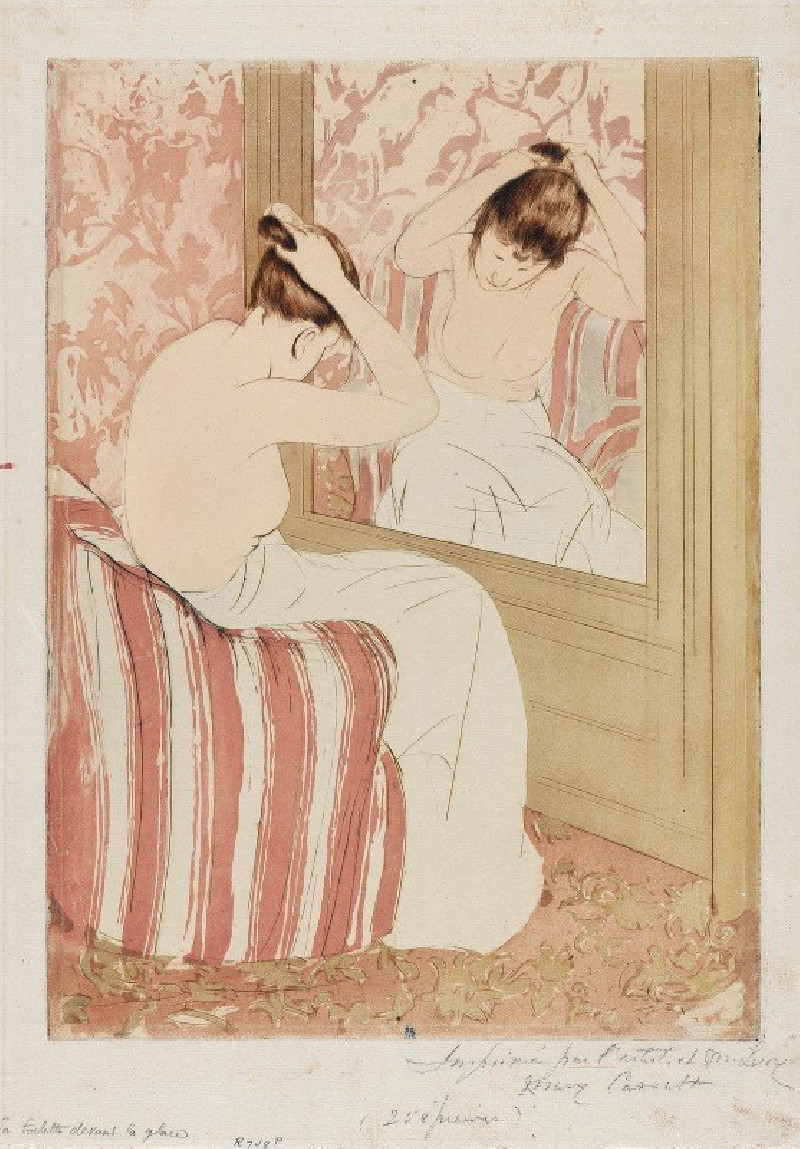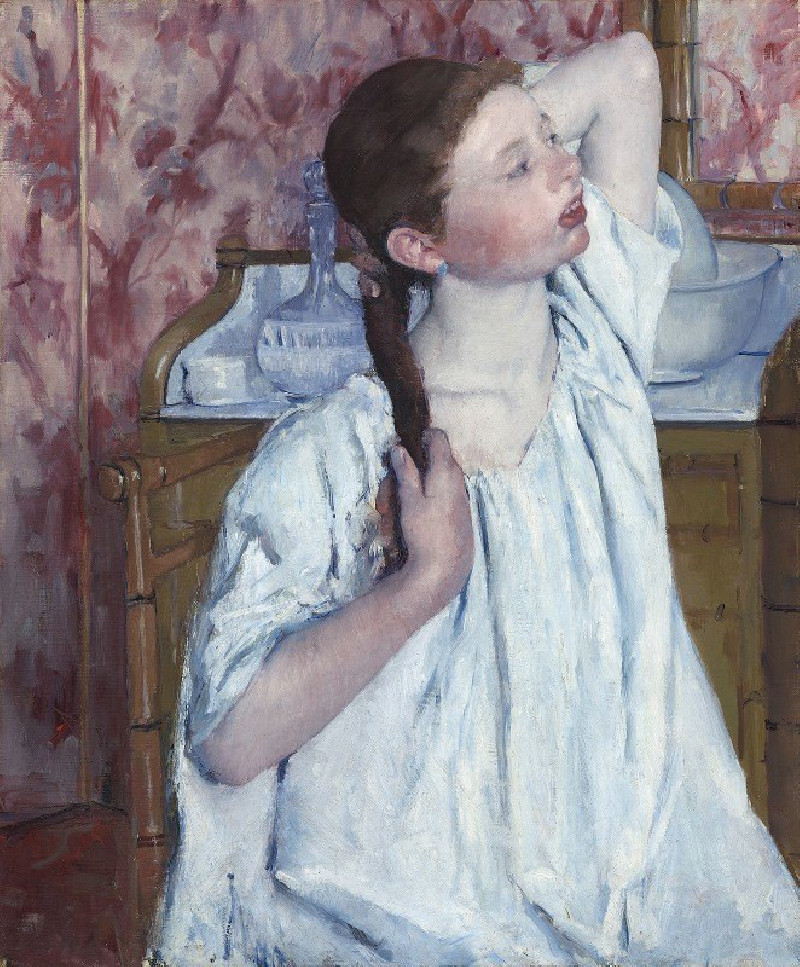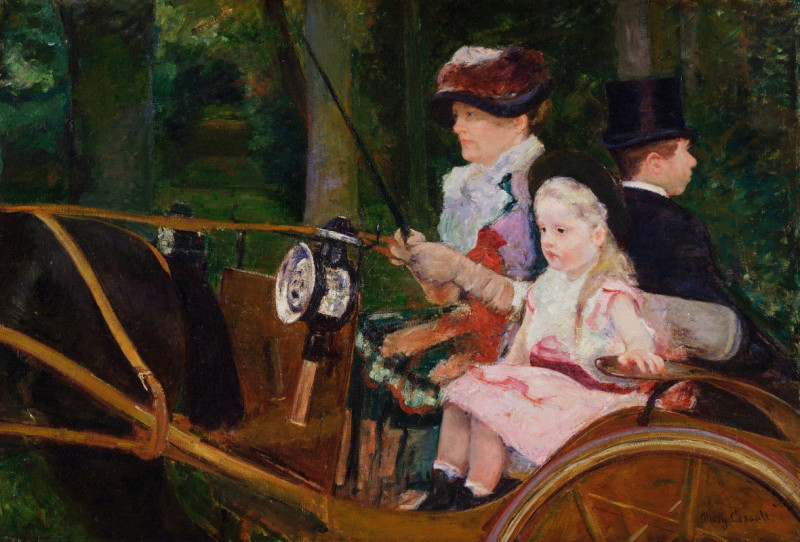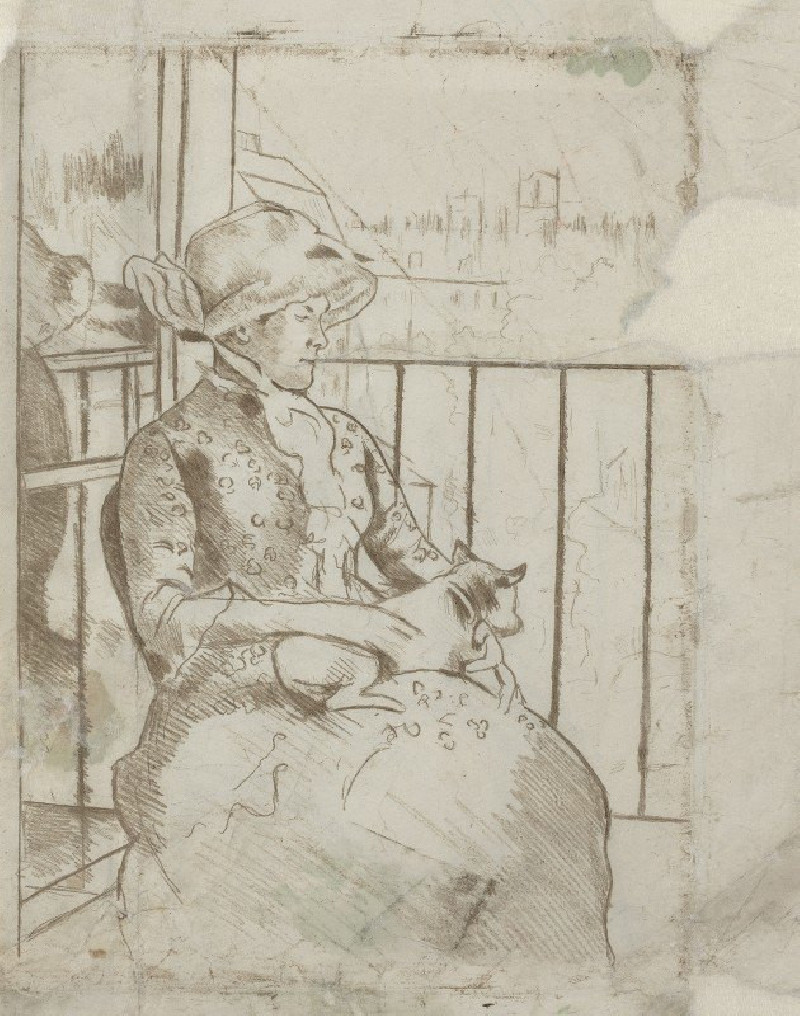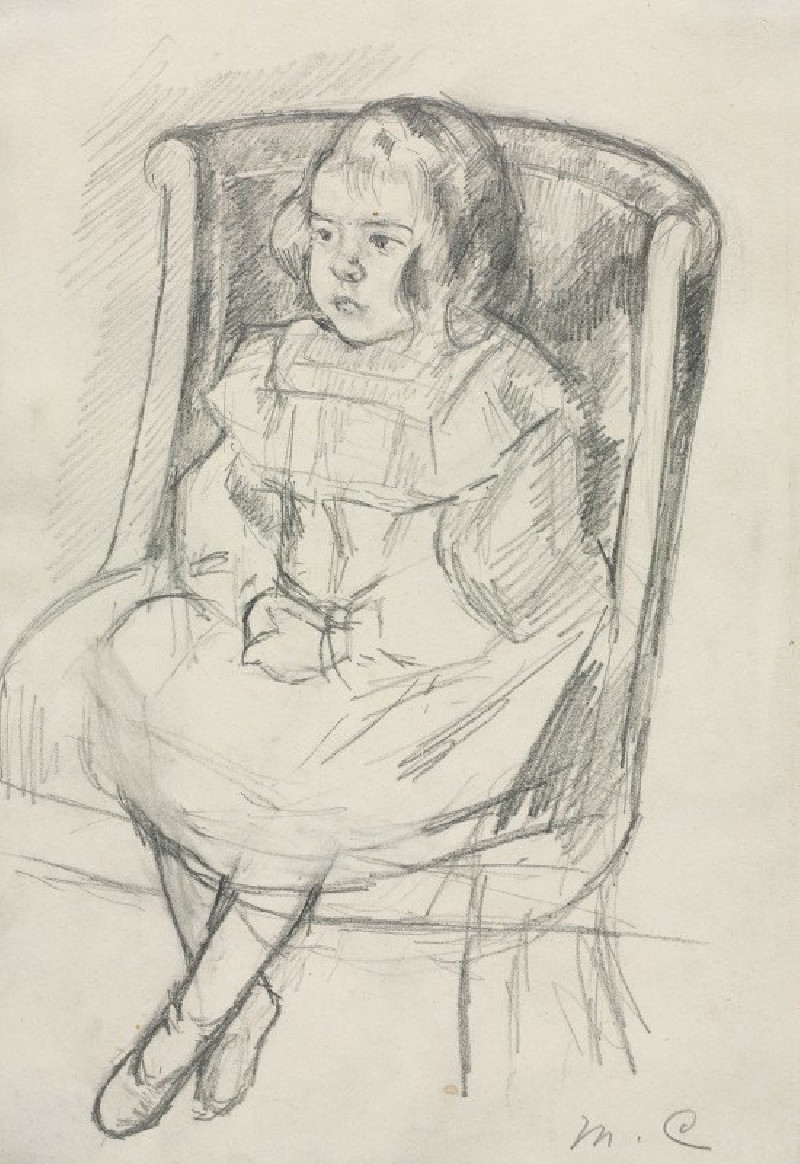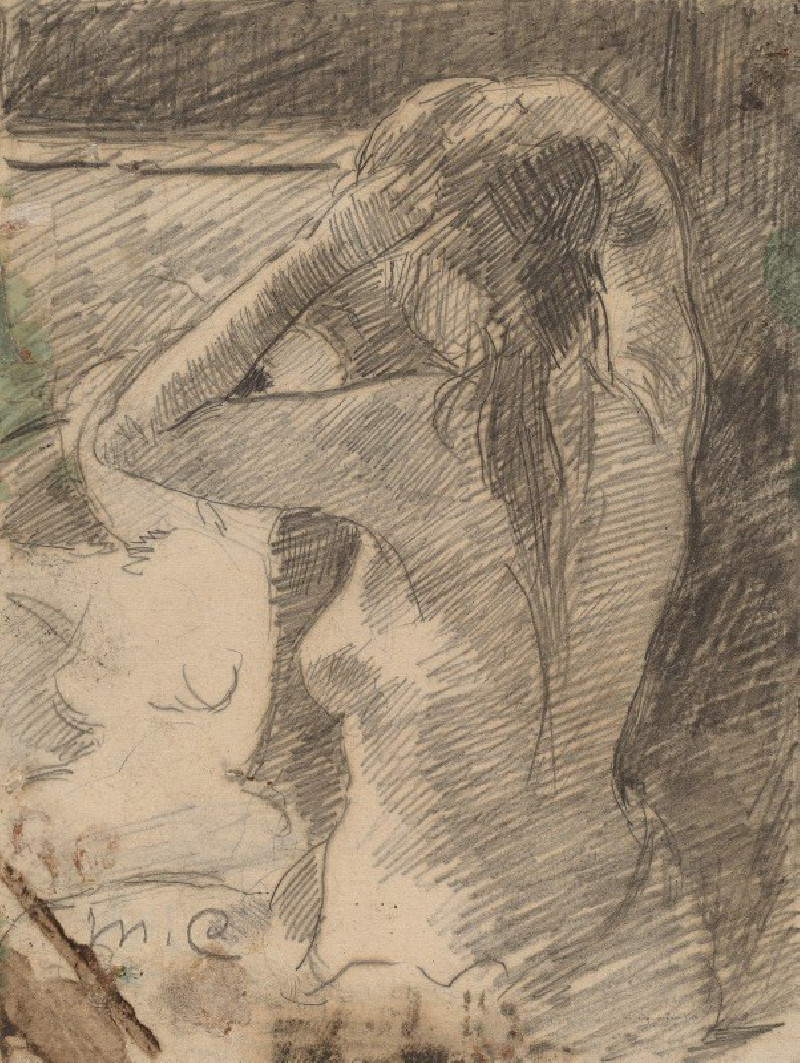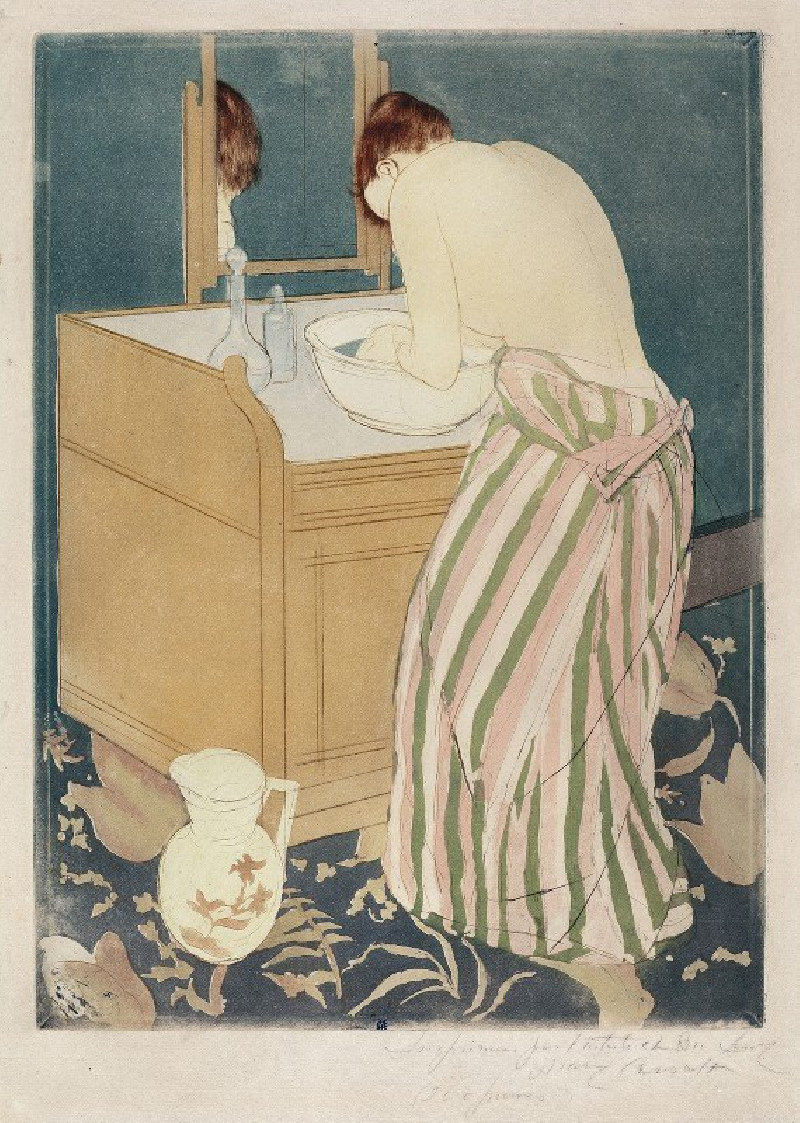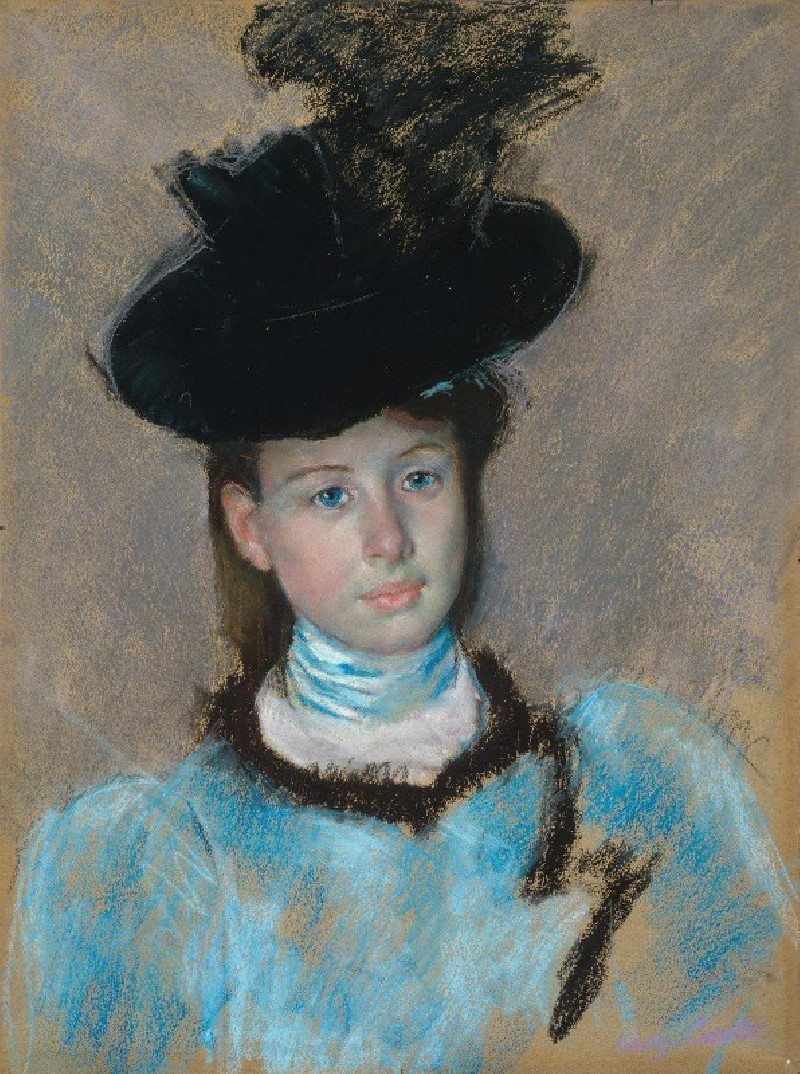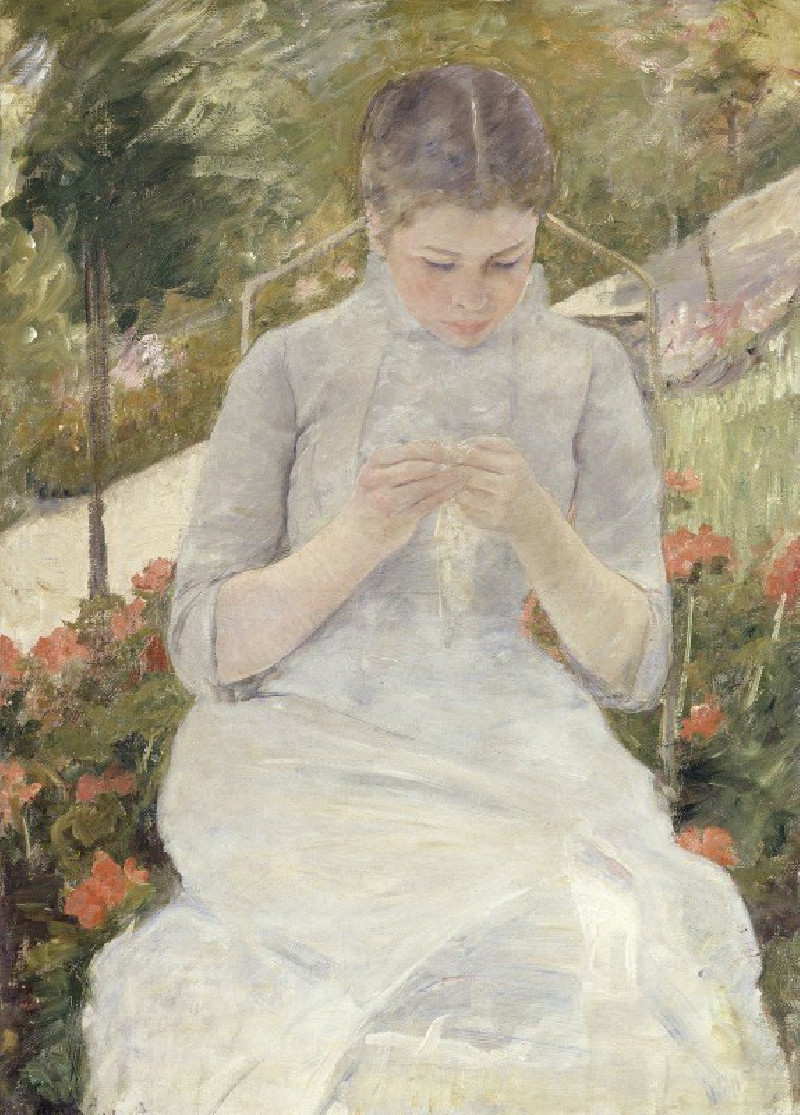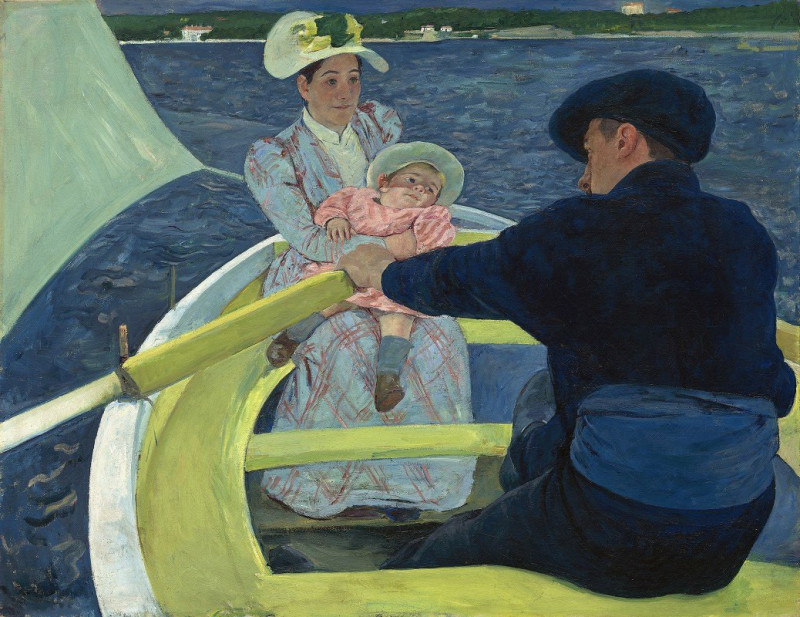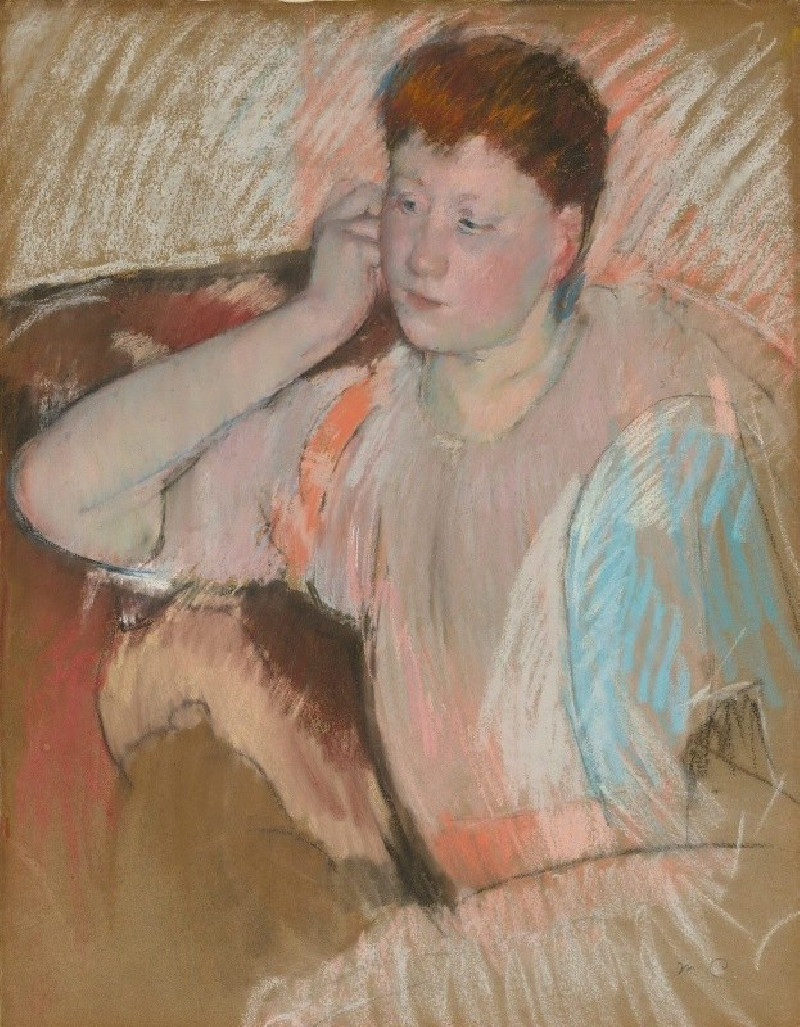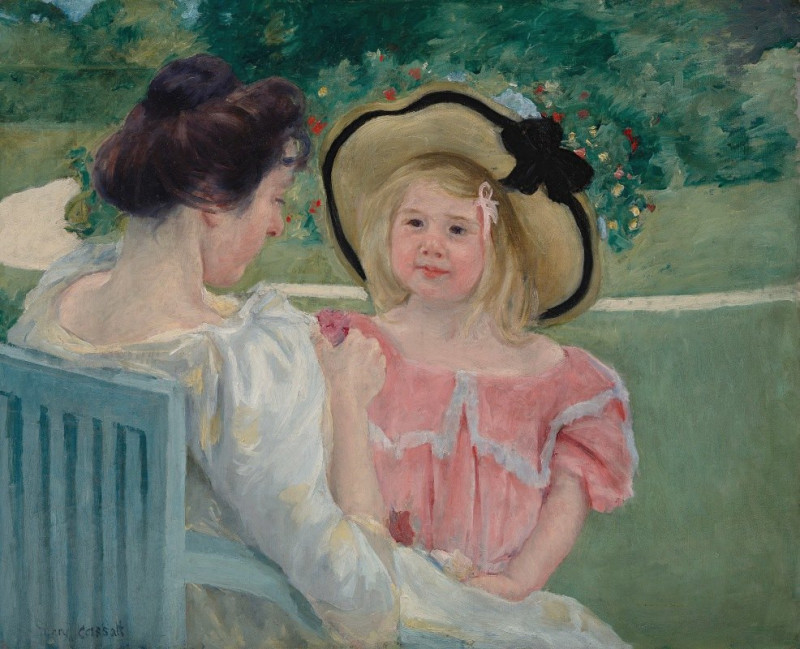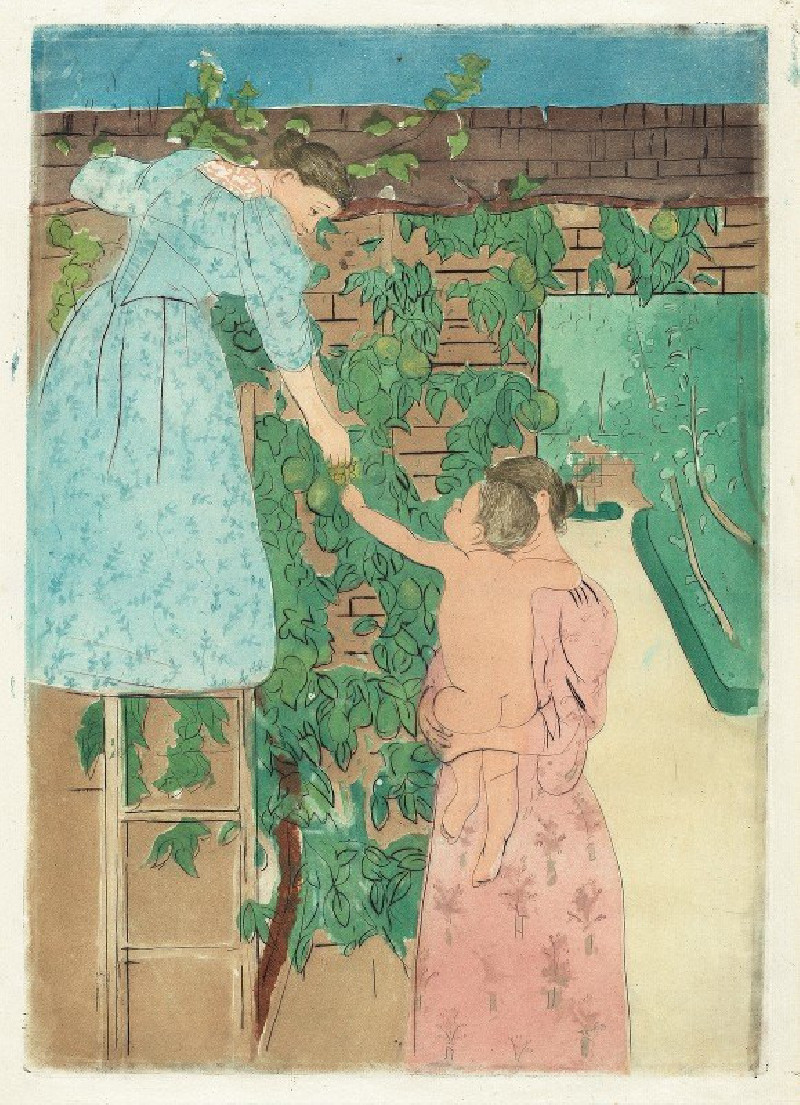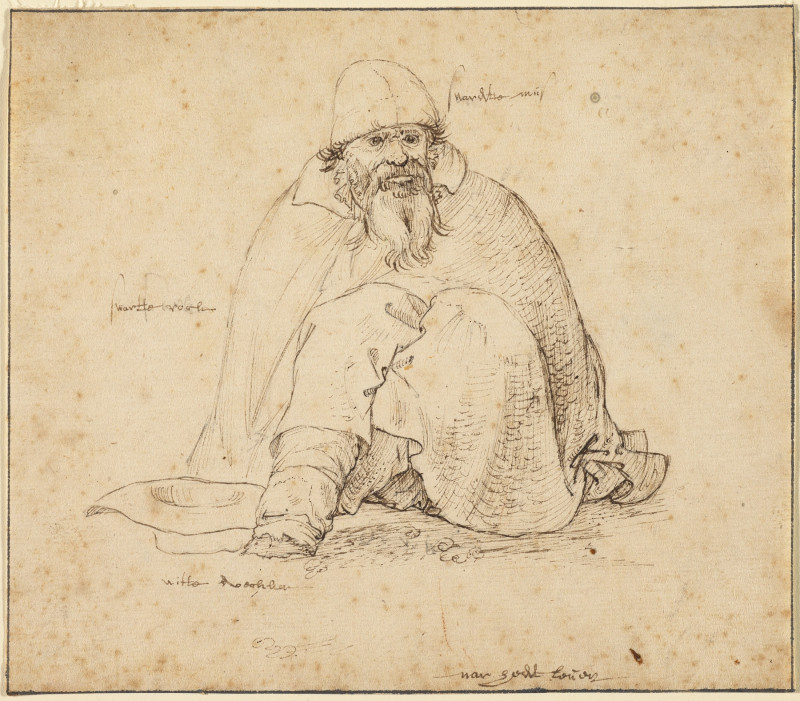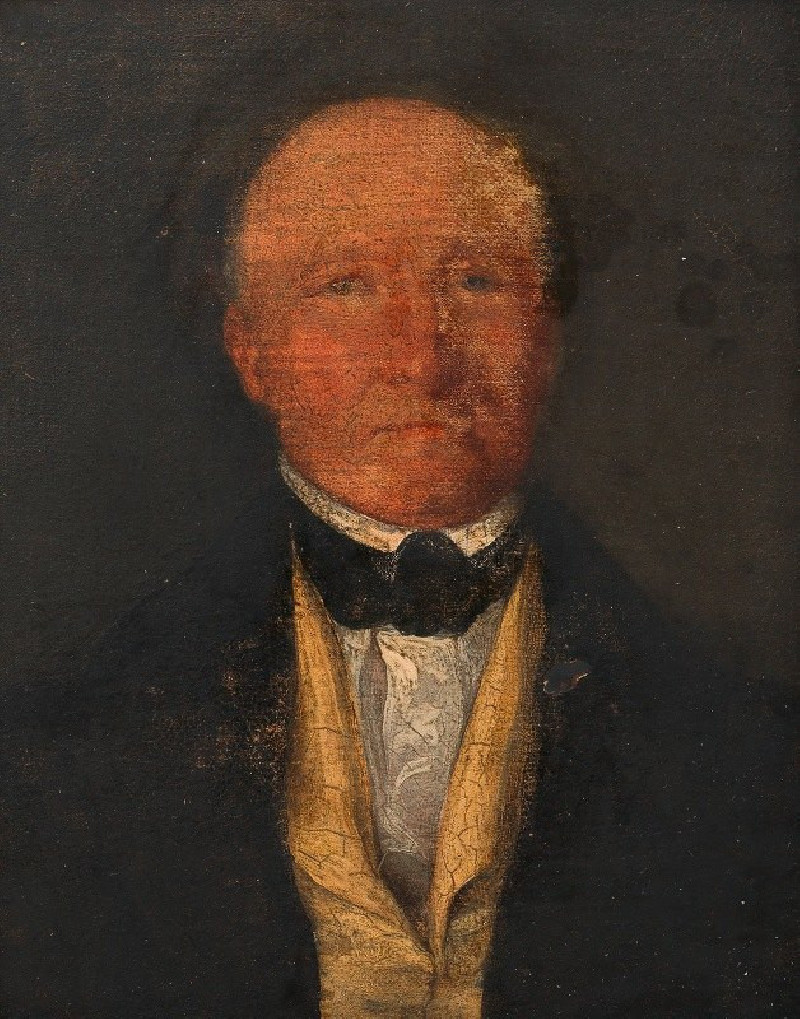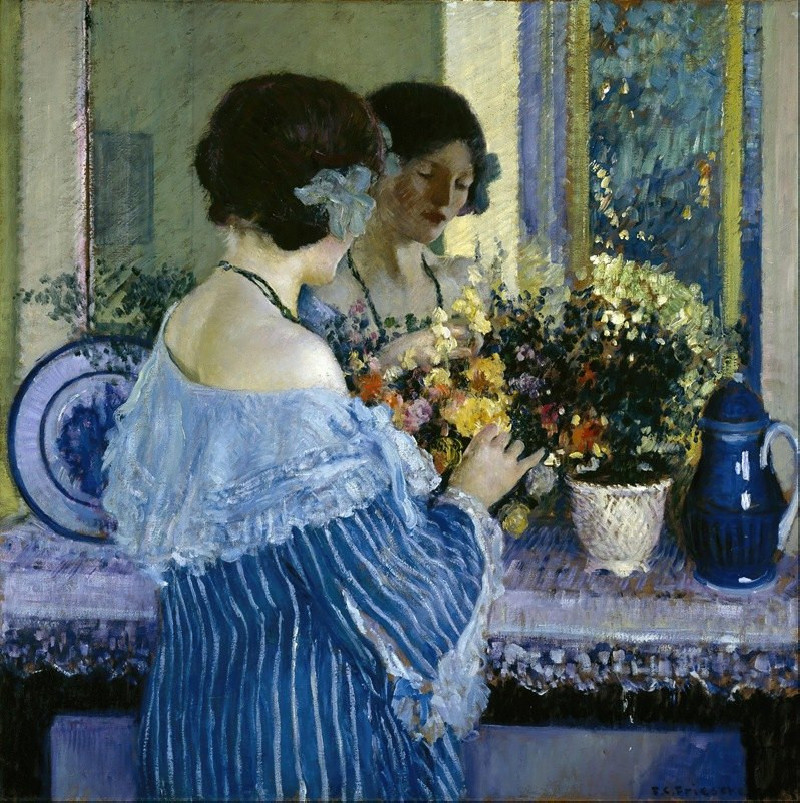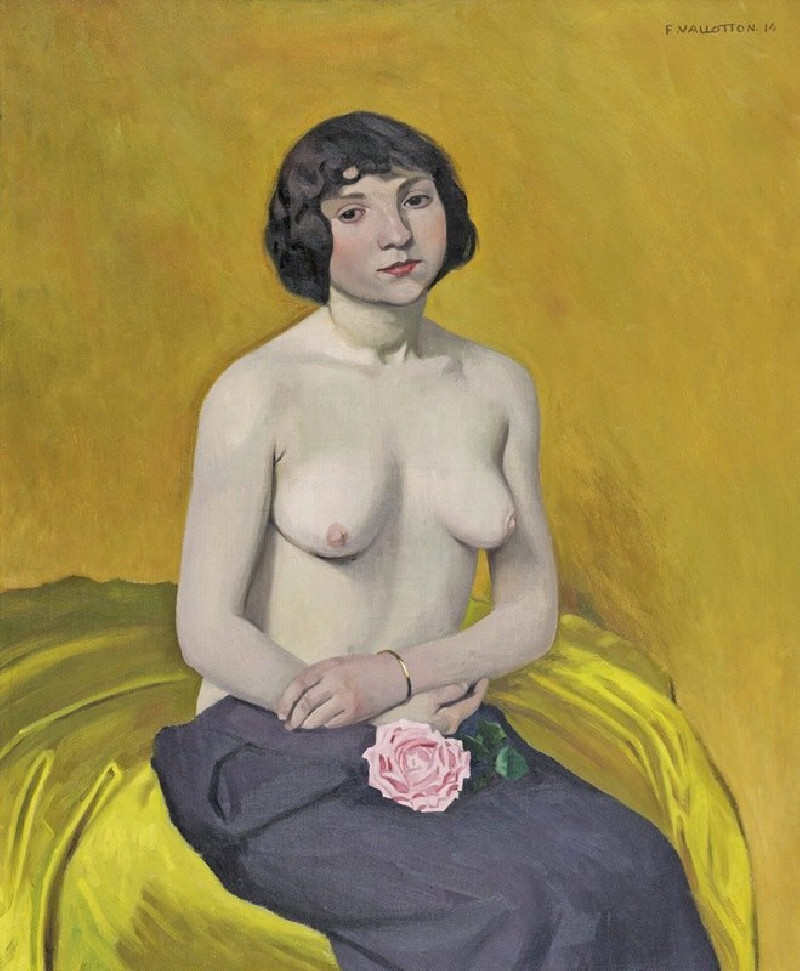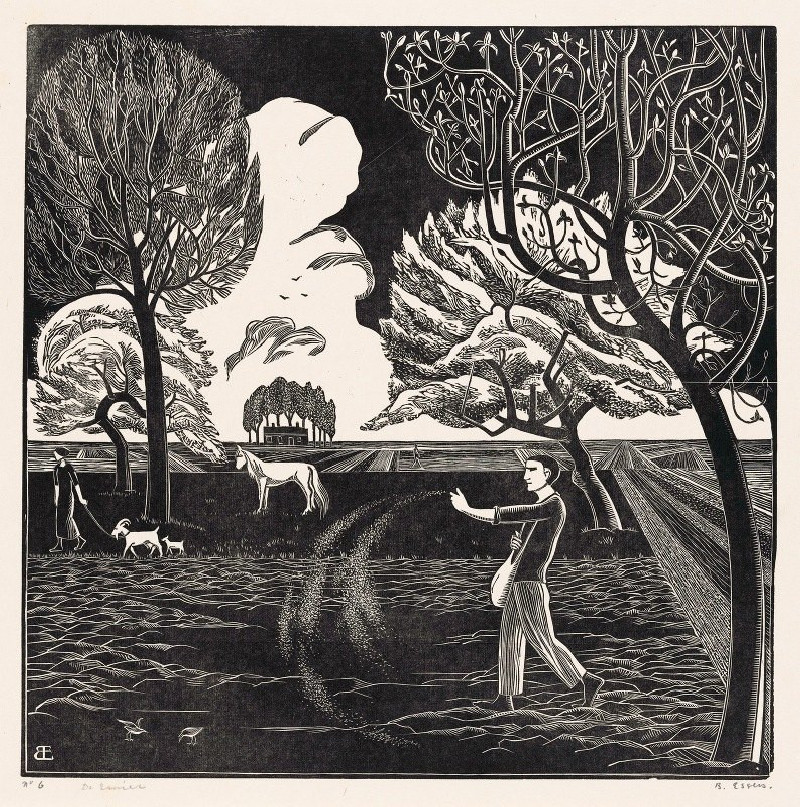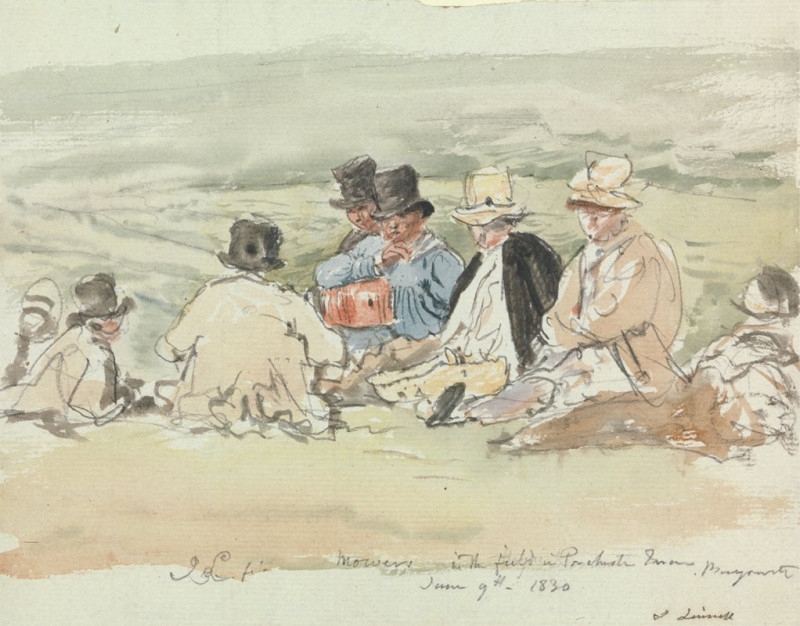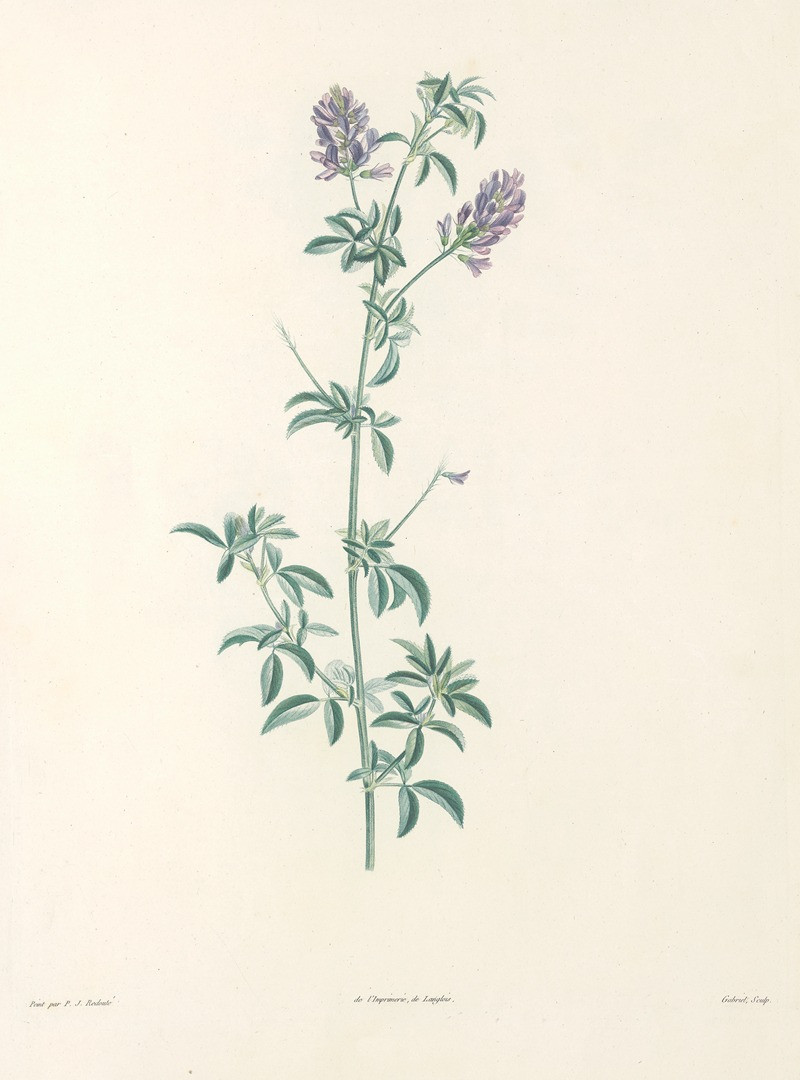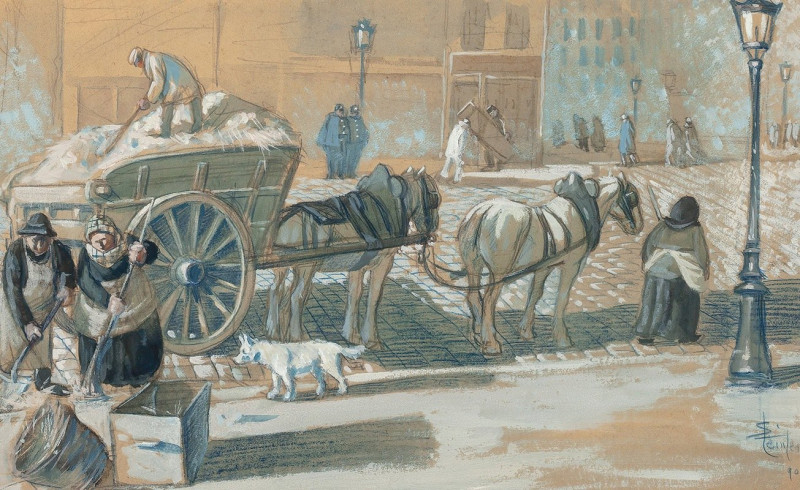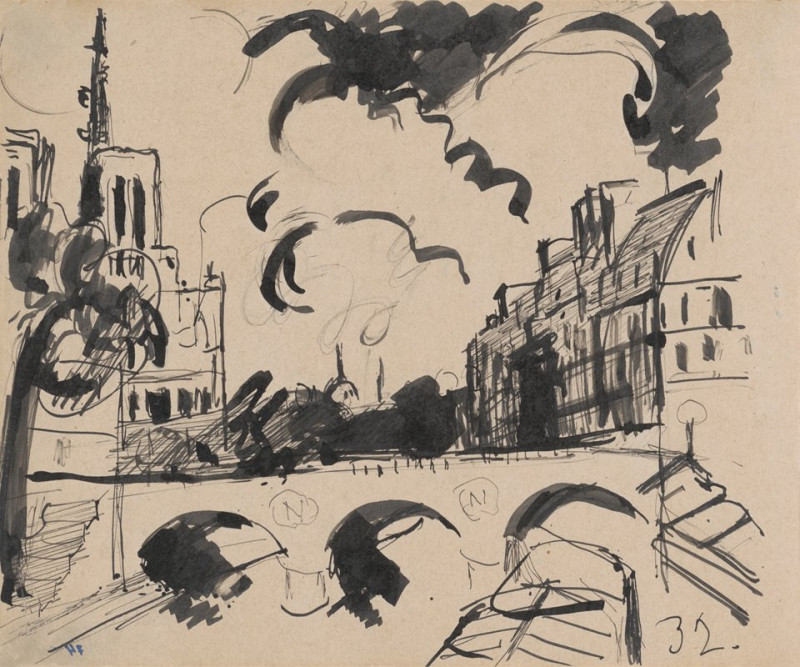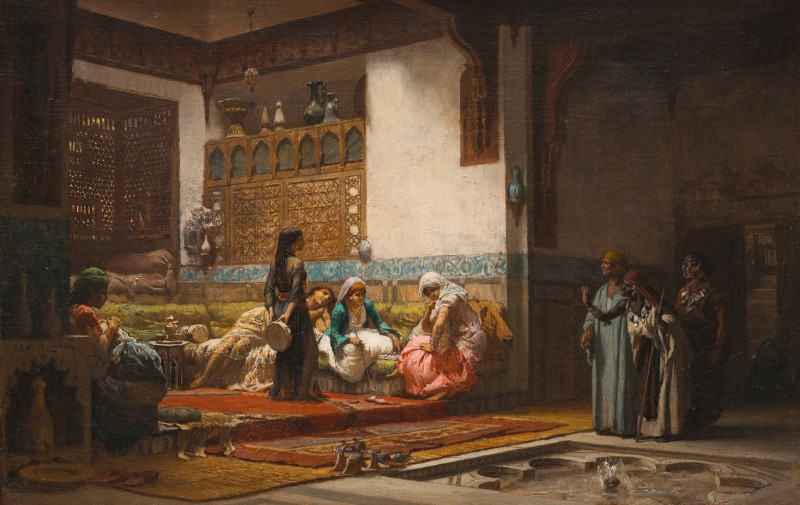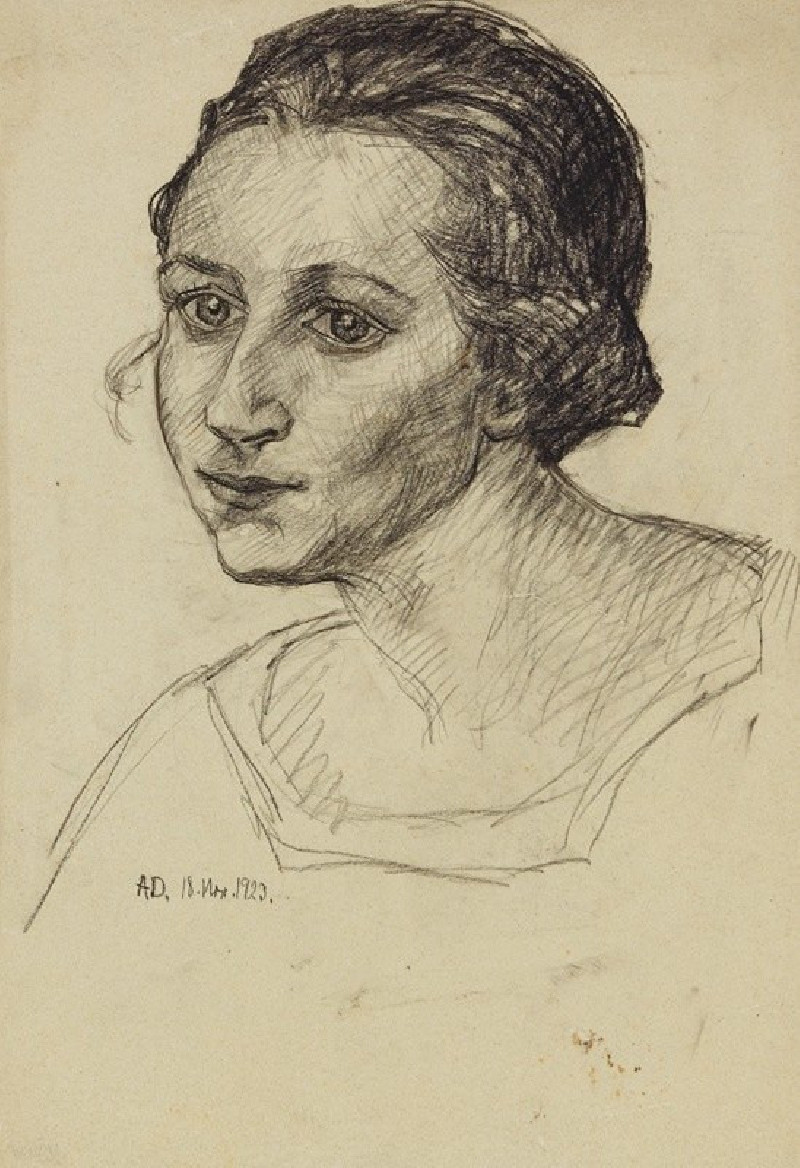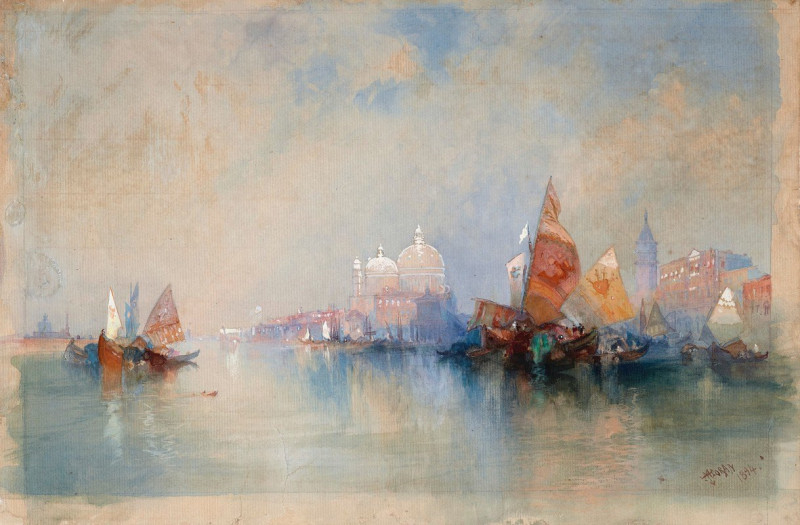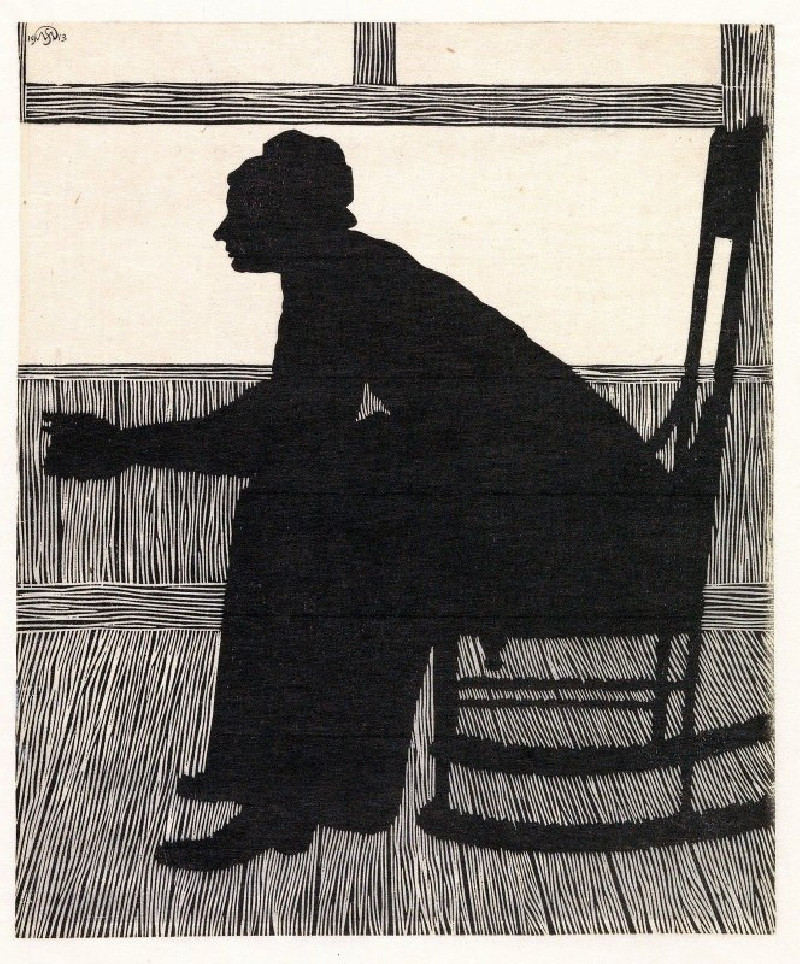Woman With A Fan
Technique: Giclée quality print
Recommended by our customers
More about this artwork
This painting by Mary Cassatt, titled "Woman with a Fan," features a thoughtful and nuanced portrayal of a woman in an interior setting. The composition focuses on the woman, who is depicted in a three-quarter profile view. She holds a large, open fan, which dominates the lower half of the canvas with its warm, golden tones that contrast with her light green dress.The woman's expression is contemplative and serene, with a slight downturn of her eyes suggesting introspection or perhaps a moment of quiet emotion. Her attire, which includes a white blouse with a high collar underneath a soft, green bodice, and hints of a red garment beneath, suggests a certain formality, yet there is an intimacy in her posture and the setting that softens the overall effect.The brushstrokes are loose and expressive, characteristic of Cassatt's Impressionist style, capturing both the texture of the fabric and the subtle variations in light and shadow on the woman’s face and dress. The background is purposefully vague, featuring indistinct forms and colors that suggest a domestic environment without drawing attention away from the central figure.Overall, the painting is a sensitive portrayal of a woman in a private moment, showcasing Cassatt's skill in depicting the textures of everyday life and the nuanced emotions of her subjects.
Delivery
Returns
Mary Stevenson Cassatt was an American painter and printmaker. She was born in Allegheny City, Pennsylvania (now part of Pittsburgh’s North Side), but lived much of her adult life in France where she befriended Edgar Degas and exhibited with the Impressionists. Cassatt often created images of the social and private lives of women, with particular emphasis on the intimate bonds between mothers and children.
She was described by Gustave Geffroy as one of "les trois grandes dames" (the three great ladies) of Impressionism alongside Marie Bracquemond and Berthe Morisot.In 1879, Diego Martelli compared her to Degas, as they both sought to depict movement, light, and design in the most modern sense.

